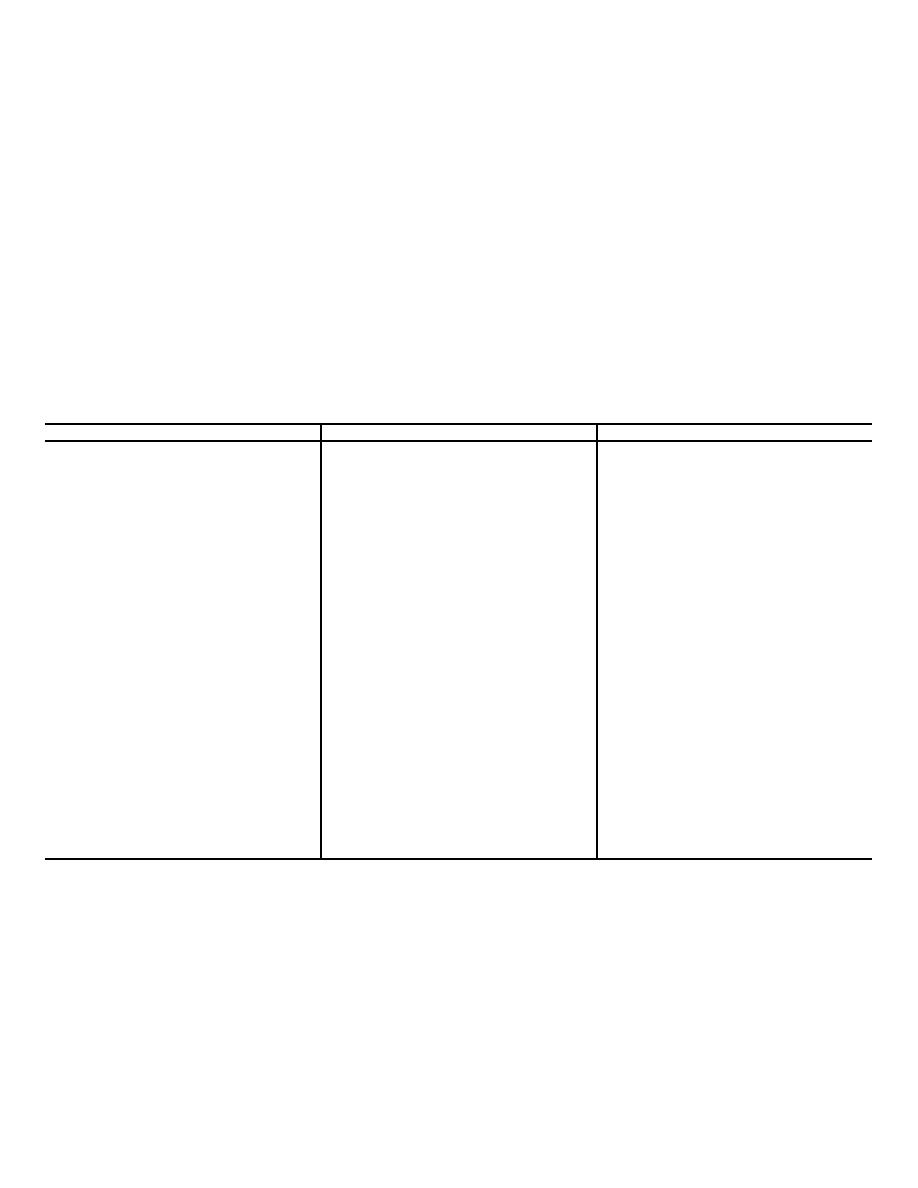 |
|||
|
|
|||
|
Page Title:
Section IV. TROUBLESHOOTING (ORGANIZATIONAL) |
|
||
| ||||||||||
|
|
 TM 5-4310-340-24
Section IV. TROUBLESHOOTING (ORGANIZATIONAL)
and principles of operation apply in troubleshooting the
2-8. General
equipment. Use all senses and methods to observe and to
a. This section contains troubleshooting information for
locate troubles. To obtain the maximum number of observed
locating and correcting some of the troubles that may develop
symptoms of trouble, question the vehicle crew about the
in the compressor. The information is arranged to provide the
conditions under which the symptoms occurred. The greater
mechanic with a flexible and logical step-by-step method of
the number of symptoms of troubles that can be evaluated,
troubleshooting. Once a malfunction is recognized, the
and the more detailed the knowledge of the conditions under
mechanic is guided in solving the maintenance problem by
which they occurred, the easier it will be to isolate the defect.
the use of troubleshooting routines or by the combined use of
troubleshooting routines and supporting information.
c. When troubleshooting, it is important to note that the
compressor is a part of a system which consists of associated
b. This manual cannot cover all possible troubles
components and a compressor drive. Trouble in the system
which may occur under the many operating conditions. If a
may be caused by other components and not the compressor.
specific trouble, test, and remedy is not covered, proceed to
See TM 9-2350-232-20-2 for troubleshooting all components
isolate the system in which the trouble occurs and then locate
of the system except the compressor.
the defective component. Standard automotive theories
Chart 2-1. Troubleshooting-Organizational
Malfunction
Probable cause
Corrective Action
1. Compressor overheats
a. Dirty coolers.
a. Clean coolers.
b. Air circulation obstructed.
b. Remove obstruction.
c. Low oil level.
c. Add oil to full mark on dipstick
(LO 9-2350-232-12)
d. Defective compressor
d. Notify direct support main-
tenance
2. Excessive oil consumption
a. Leaking tube or fitting
a. Check tubes and fittings for leaks.
Tighten as required (para 1-.)I. If
leak cannot be stopped. notify
direct support maintenance.
b. Defective compressor
b. Notify direct support main-
tenance.
3. Relief valve activated
a. Defective relief valve.
a. Notify direct support maintenance.
b. Notify direct support main-
tenance.
4. Excessive vibration
a. Loose compressor
a. Tighten screws (TM 9-2350-232-
screws
20) .
b. Defective compressor
b. Notify direct support main-
tenance.
5. Compressor will not turn
a. Defective spline.
a. Notify direct support maintenance.
b. Defective compressor internal
b. Notify direct support main-
components
tenance.
6. Insufficient air pressure
a. Loose cooler connection.
a. Tighten connection.
b. Notify direct support main-
tenance.
Section V. MAINTENANCE OF COMPRESSOR ASSEMBLY
ponents allocated to organizational maintenance.
2-9. General
During installation of pipe threaded fittings use
The information in this section provides
teflon tape per MIL-T-27730 on fitting threads.
organizational maintenance personnel with the
Lubricate threads and packings with oil per MIL-
necessary information to maintain those com-
2-3
|
|
Privacy Statement - Press Release - Copyright Information. - Contact Us |